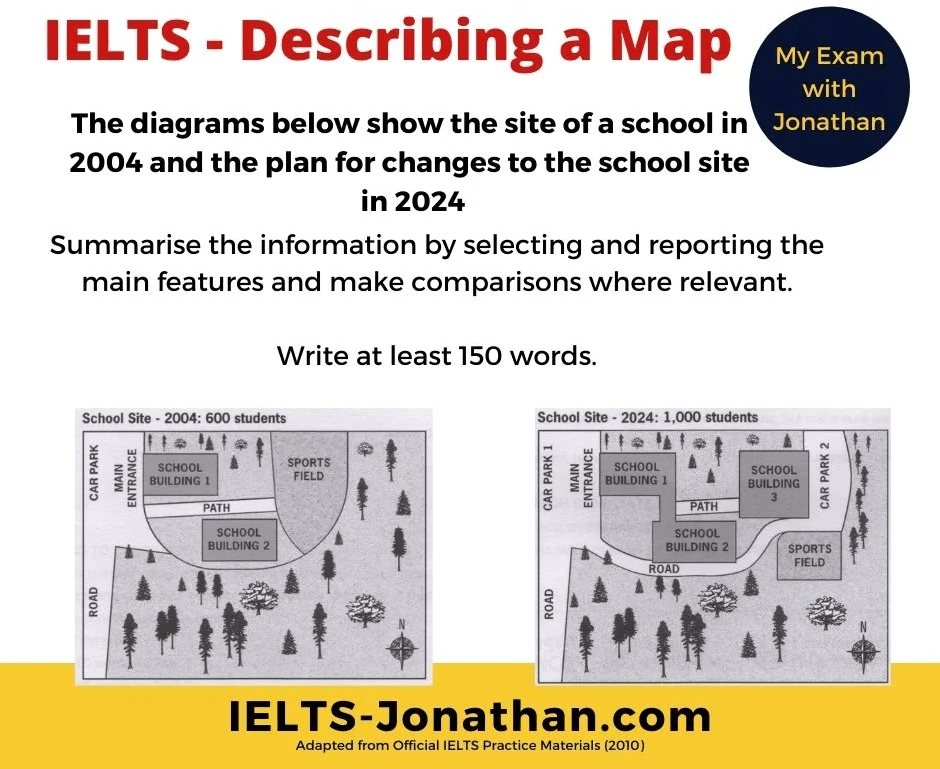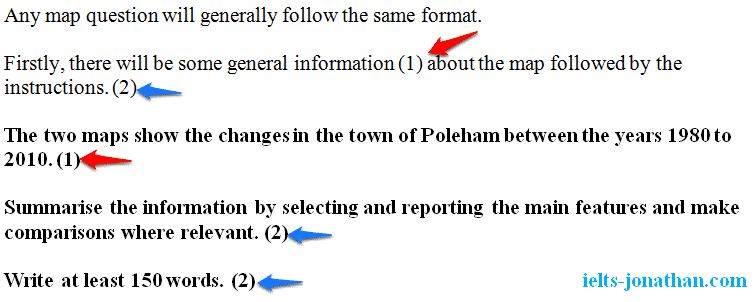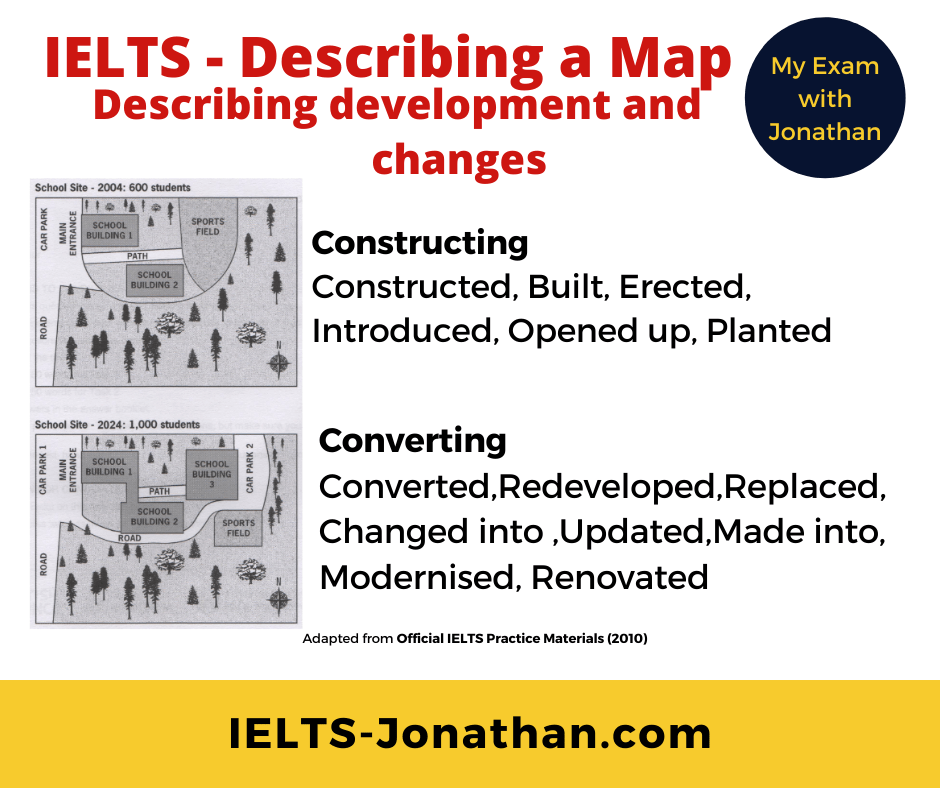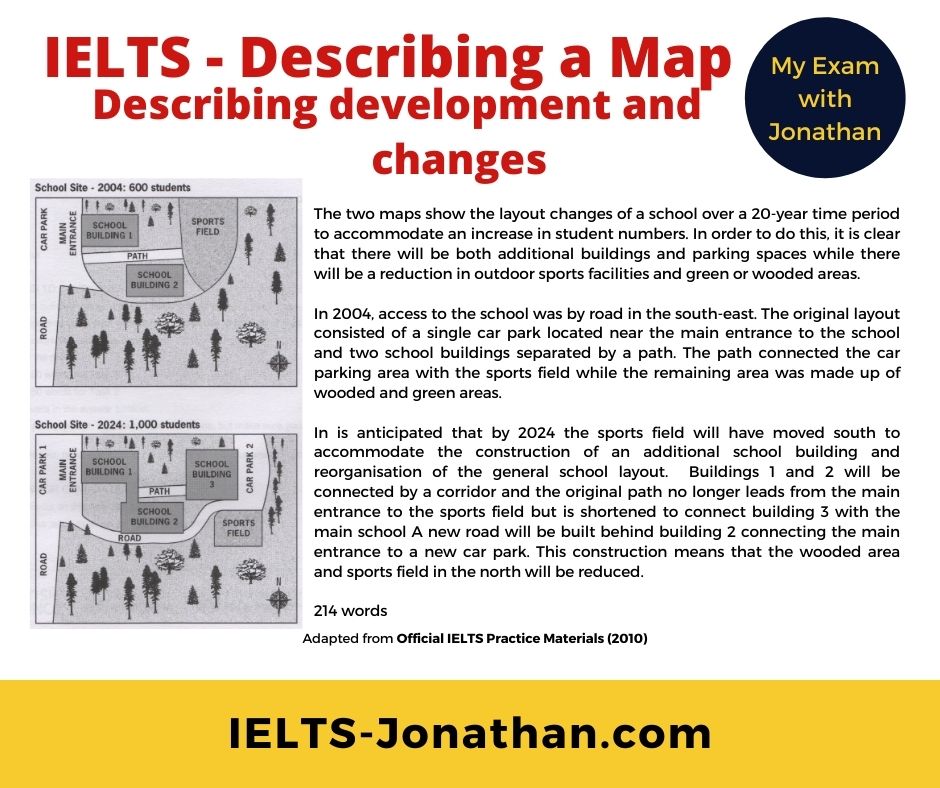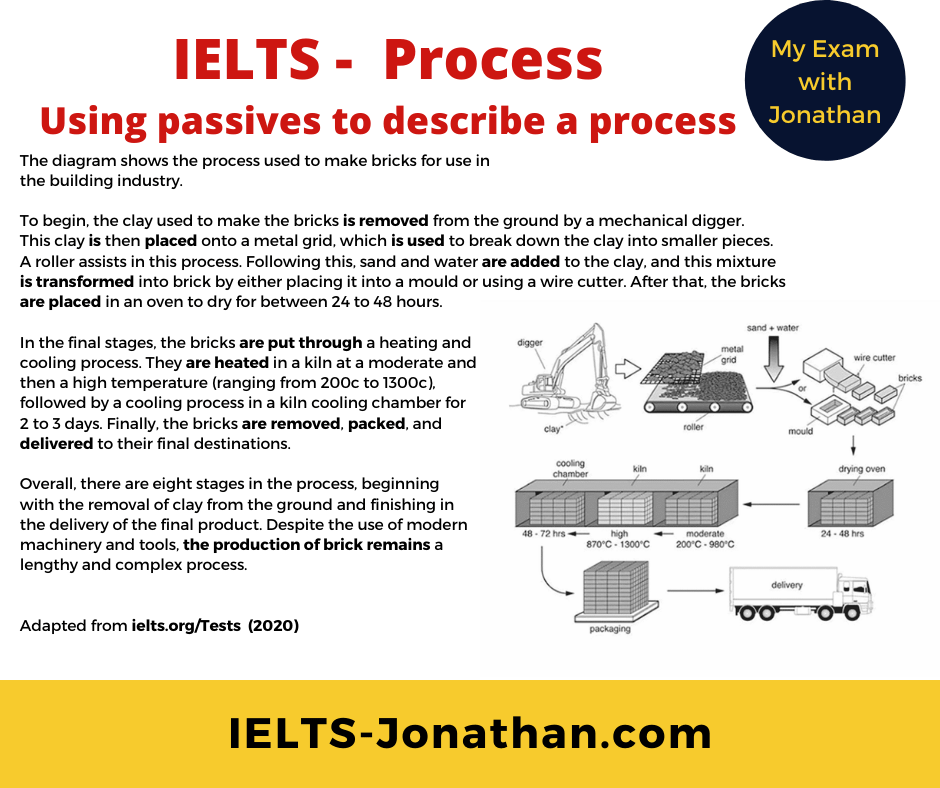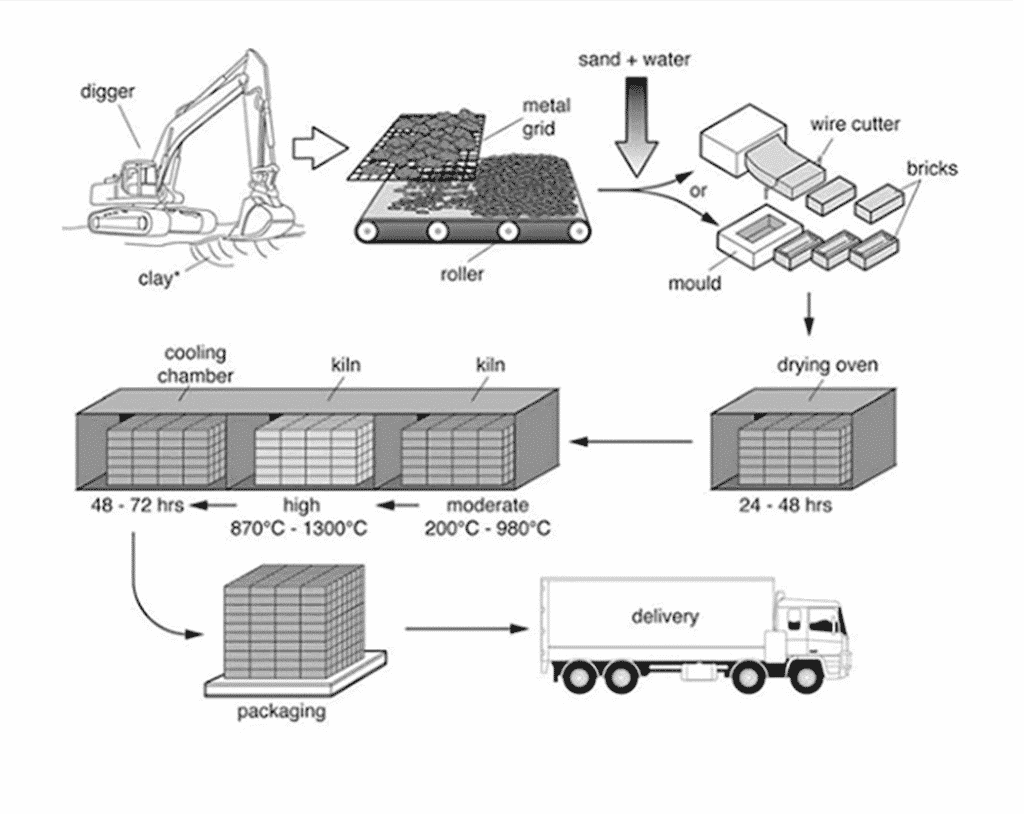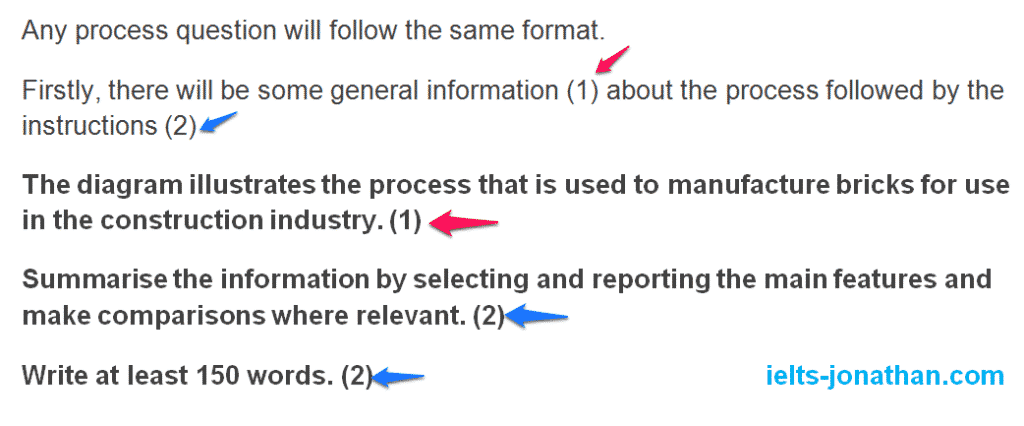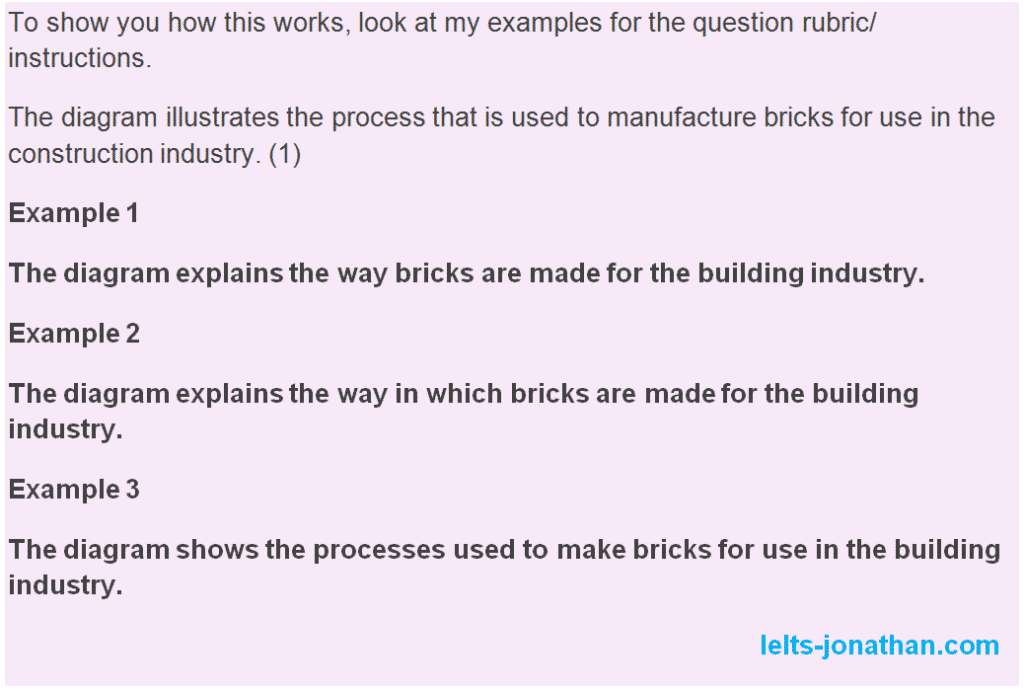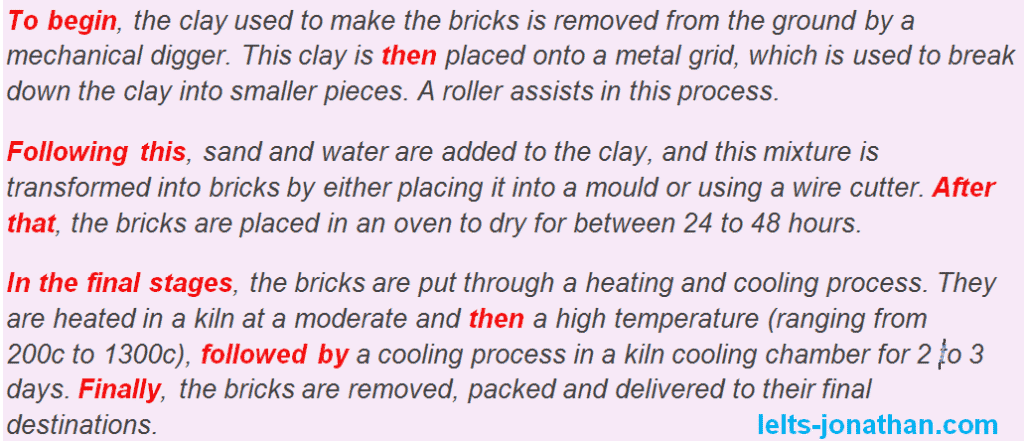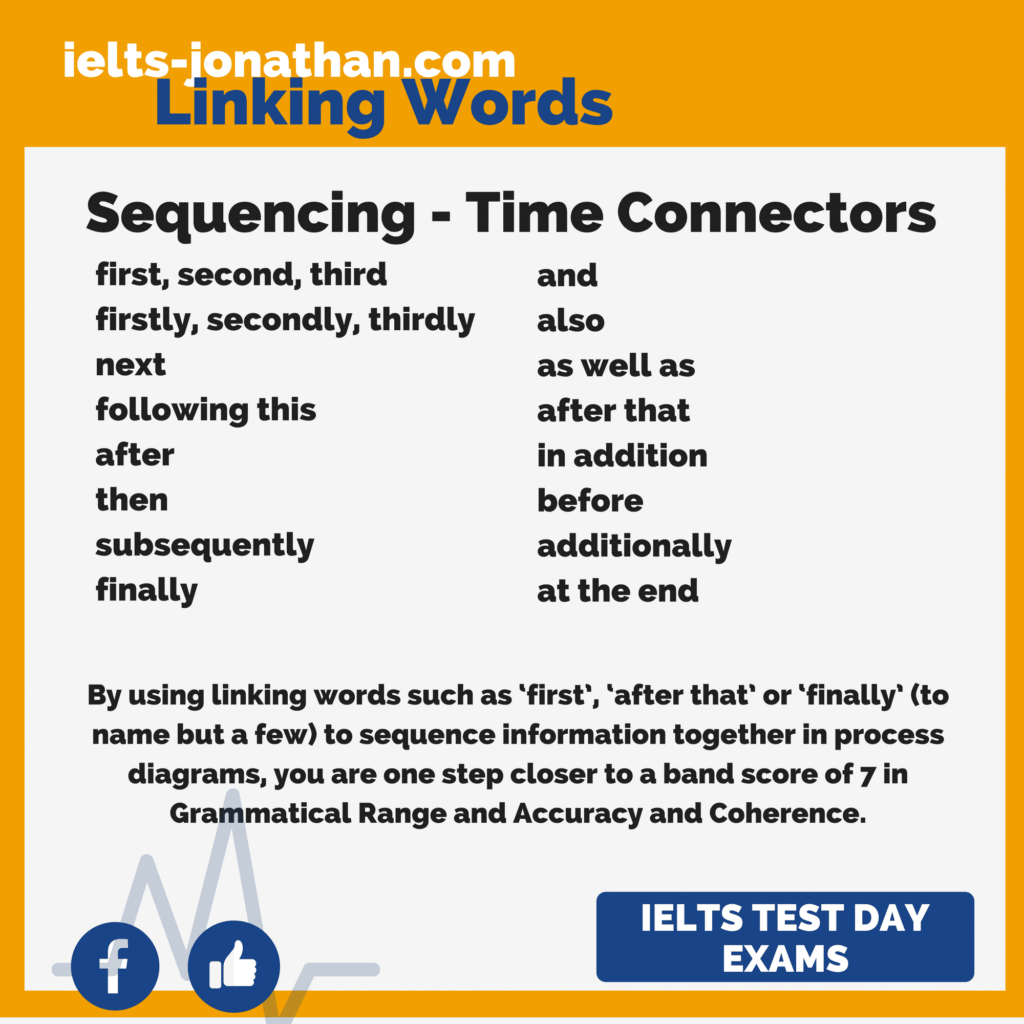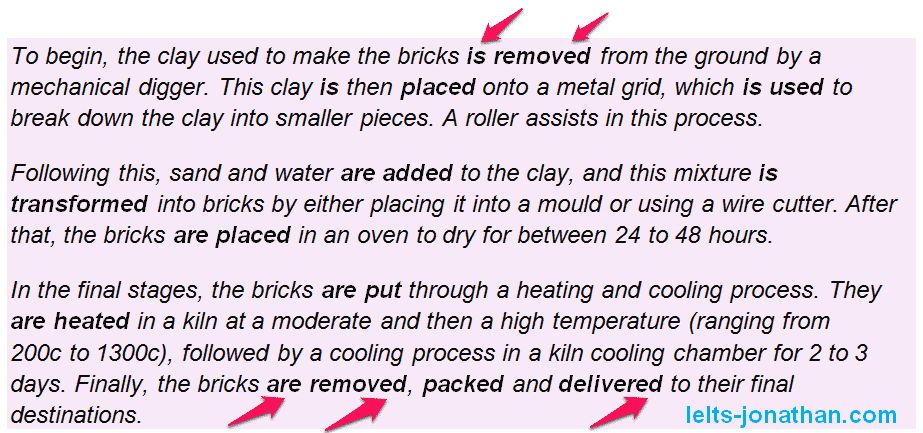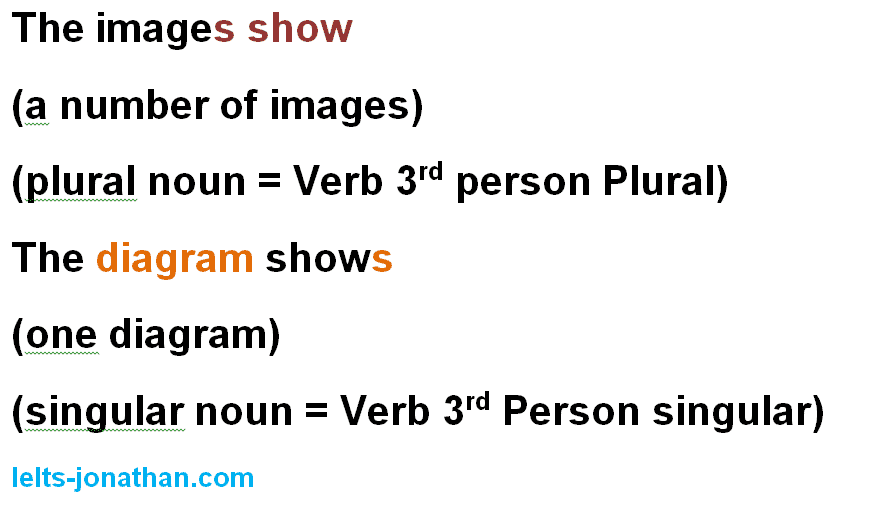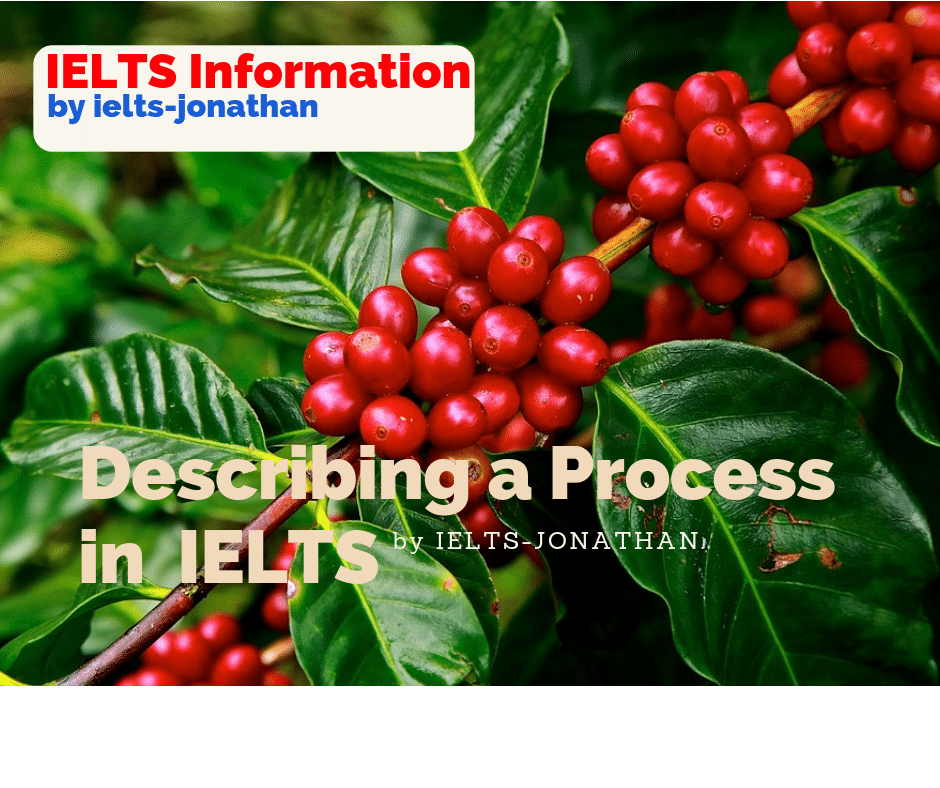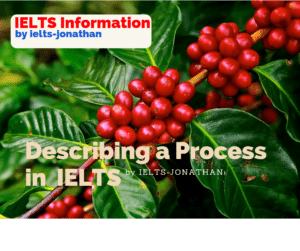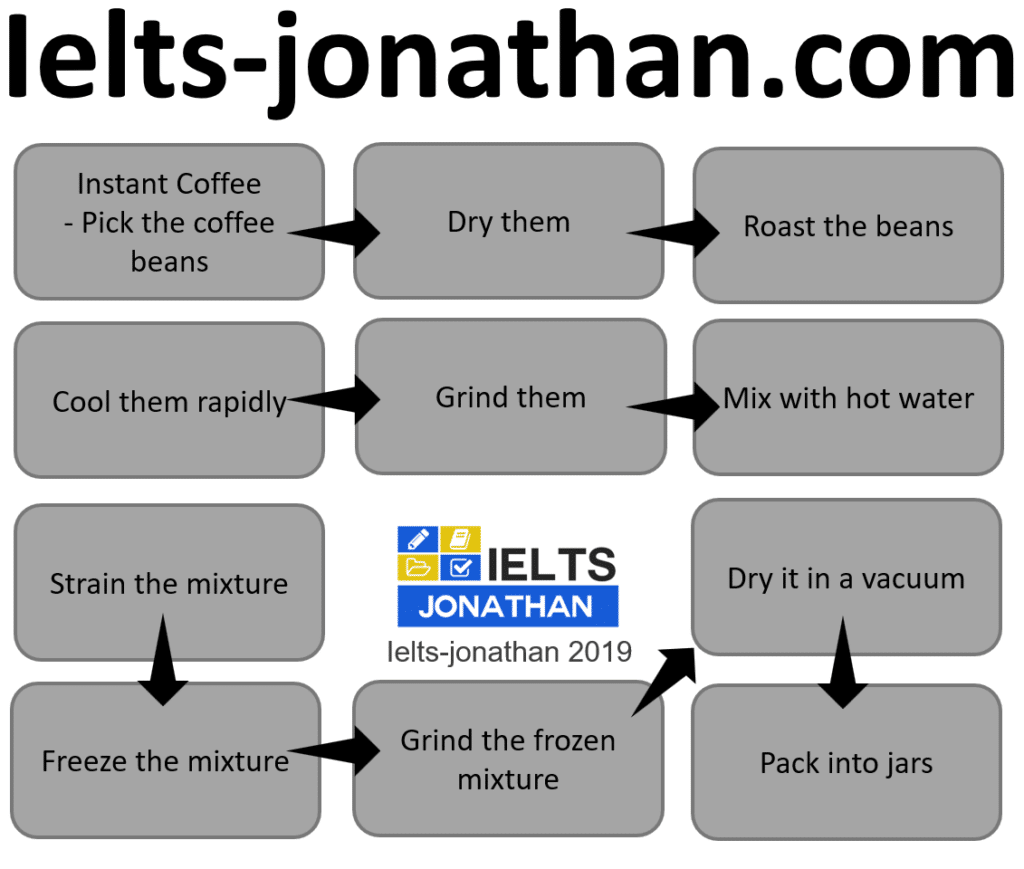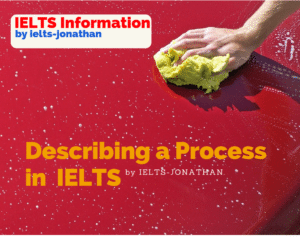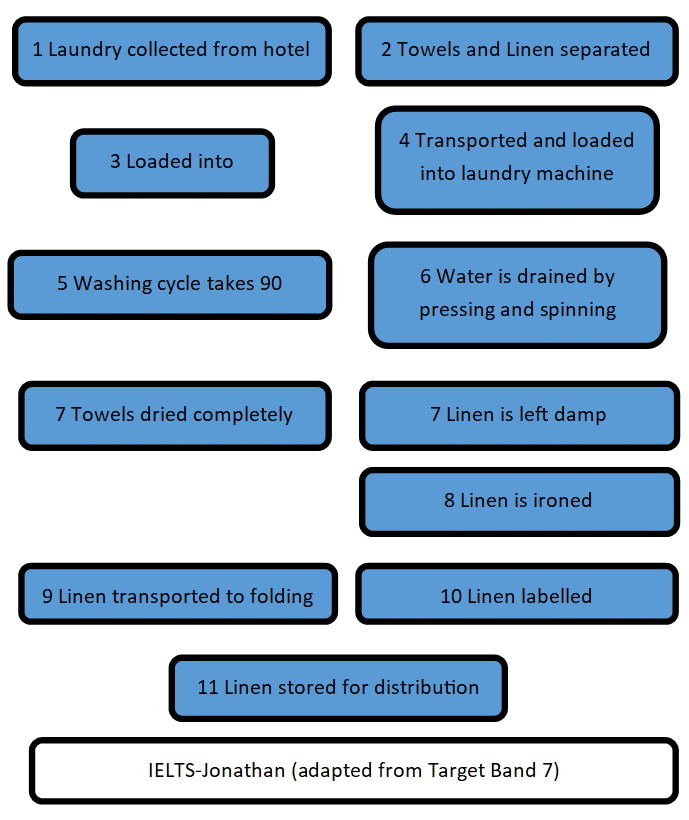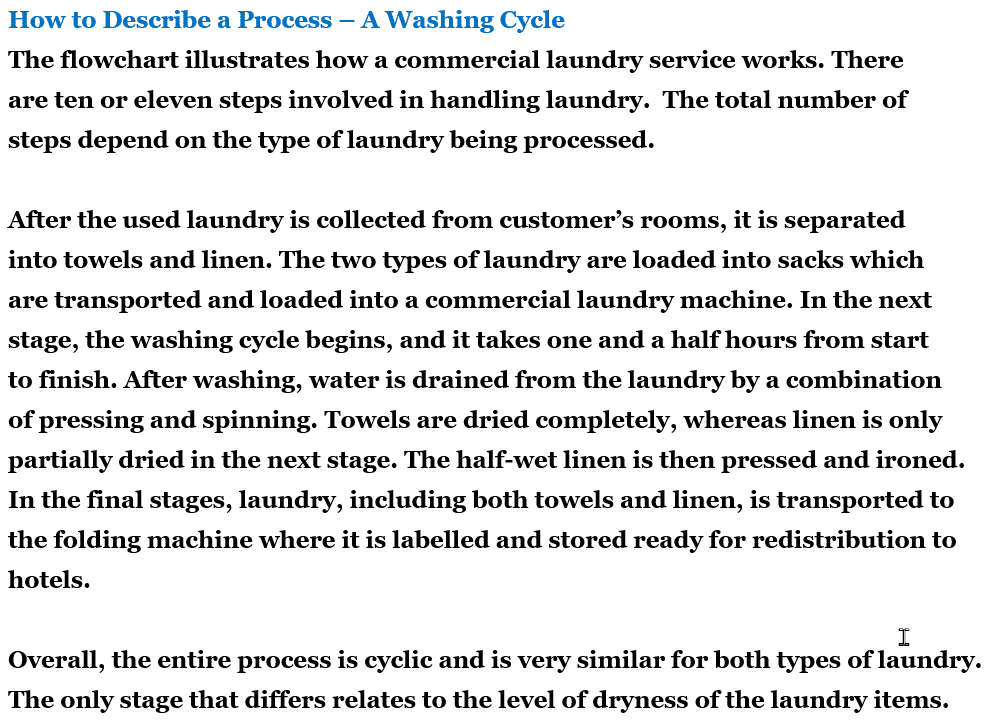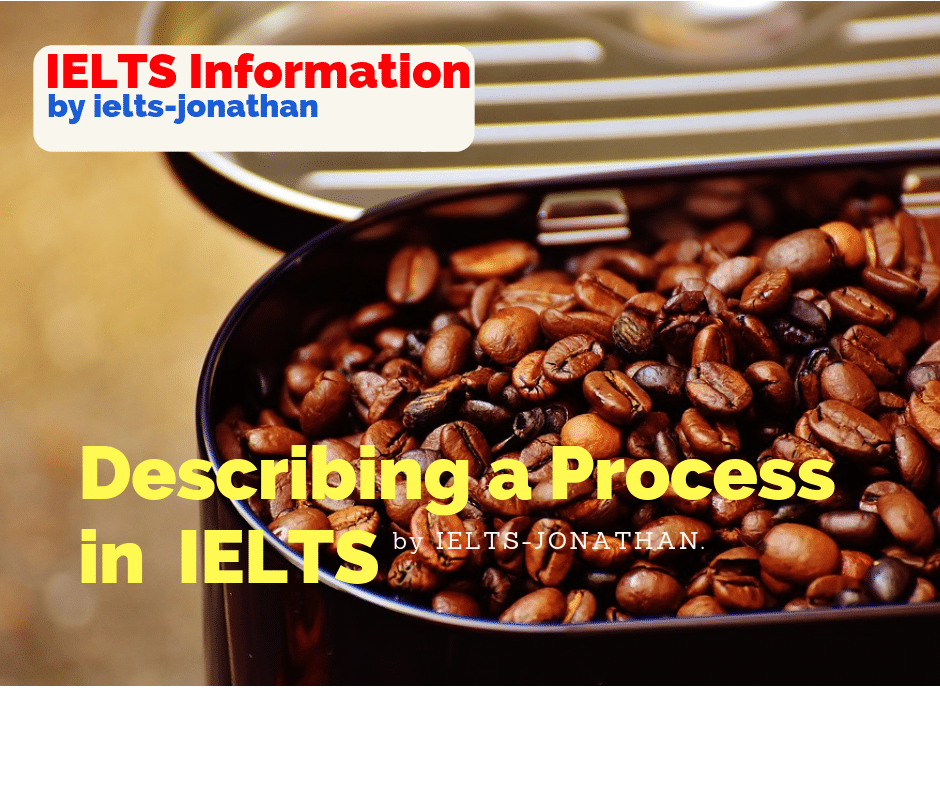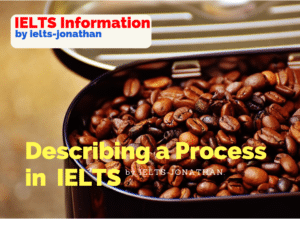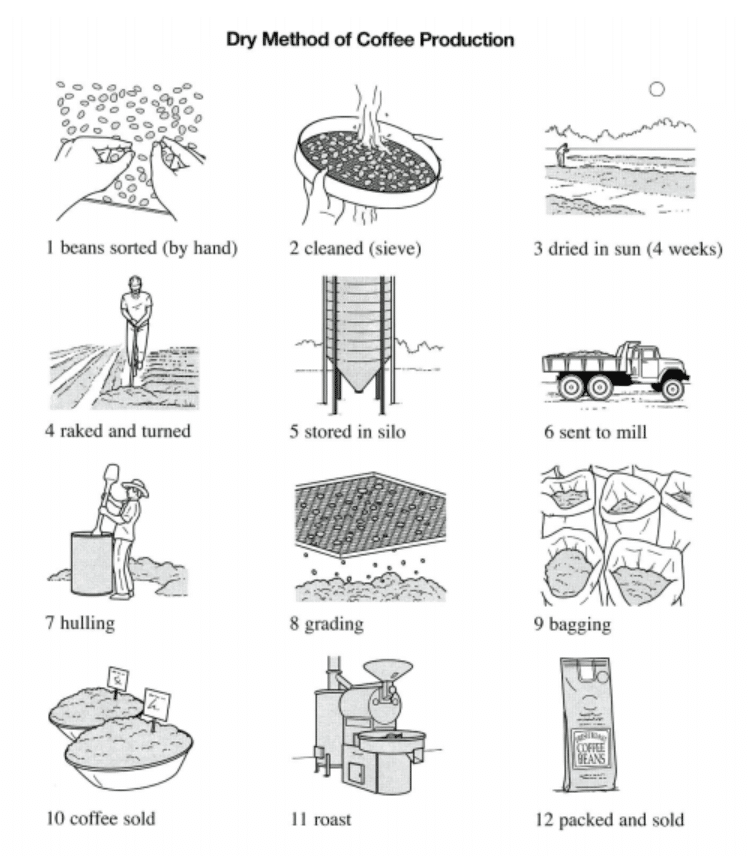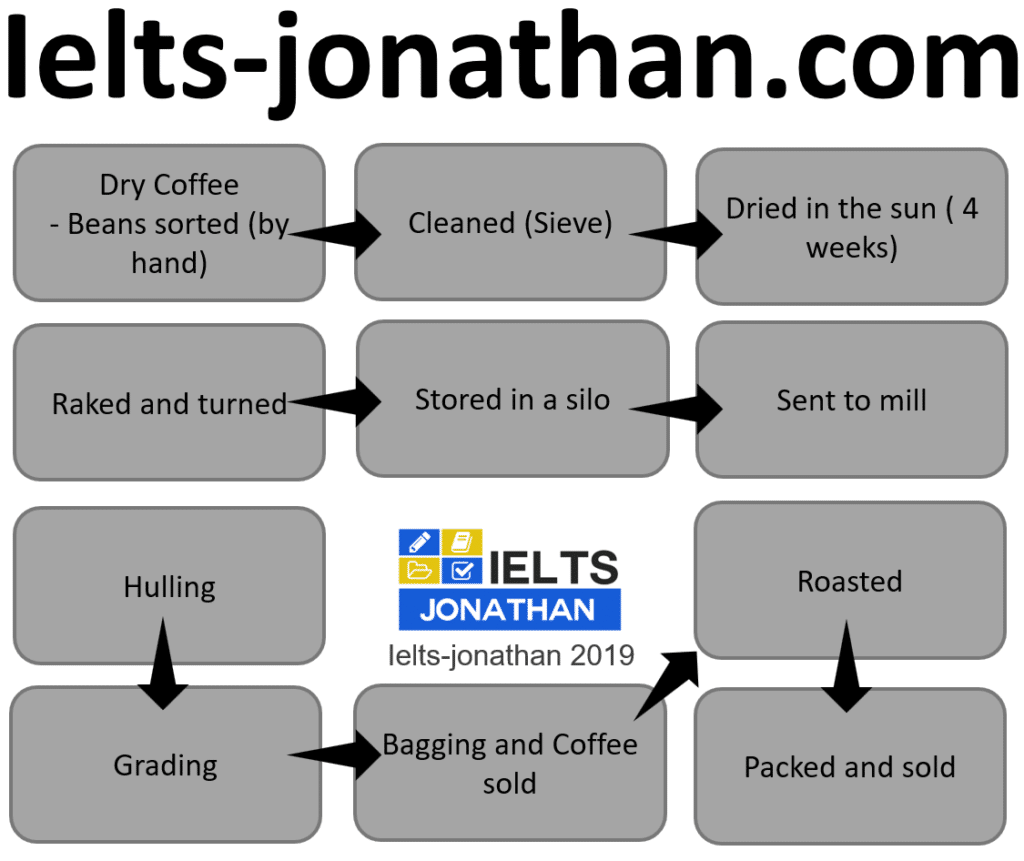What you need to know about IELTS Maps
Before you start learning how to describe maps or plans in IELTS Task 1, it would be useful for you to study these articles first.
If you are familiar with the content you can continue to the next section.
IELTS TASK 1 Describing changes and trends
IELTS TASK 1 Working correctly with numbers
IELTS TASK 1 Increase your band score with Adjectives/Adverbs
IELTS TASK 1 Using Compare and Contrast language
When writing about maps there are usually two main features that you need to notice;
the comparison of two or more features in the past
and changes over a period of time.
For this type of essay, it is standard to write a four-paragraph essay, namely;
an introduction, an overview and one or two body paragraphs
Have a look at my articles below if you need further information
If you are confident in these areas you can now study the maps below and look at the suggested structure:
Writing about Maps
Although it’s a less common type of question in the writing test (you’re more likely to get a Graph and Chart question) sometimes you will get an IELTS Map that needs to be described.
Question adapted from
The Cambridge Official Guide to IELTS
and
Official IELTS Practice Materials 2
This format of question is very visual and therefore seems easier to answer than other formats, and because they are less common, students often prepare less for it.
This is a mistake as it is really important to be prepared for all types of IELTS questions.
But, the good news is that the preparation won’t take as long as you might think.
There are different types of maps and the most common you will see is the past and present or near present comparison.
It’s important to use specific vocabulary related to this task and the grammar needed here would be prepositions, the past tense and present perfect passive necessary to describe change.
You would also need to use specific language that shows location and change.
Often there will be a compass or a measurement key which will help you with describing the map and adds to the language you can use.
More Good News!
Map Questions follow the same format as any IELTS Task 1:
This is
- Introduce the map
- Give an overview of the main point/s (necessary for Band 6 and above)
- And provide the detail
This post will explain:
- The two types of map question
- The tried and tested method for answering any map question
- How to write the introduction
- How to write about the detail showing location and time.
- How to finish with a great overview
- The commons mistakes IELTS students make
What is an IELTS Map Question?
These questions can be divided into two types: past and present maps
These will show a development over a period of time or will compare changes in the past or the past and the present day.
Occasionally, you may need to use the future tense when a plan or predicted development is suggested.
Official IELTS practice questions have featured maps of towns, cities, villages, rural areas, schools and university grounds as well the interior of buildings.
More good news is that the same skills and principles can be applied to any map, whether in the past or present.
Let’s consider a typical question first.
“The two maps show changes in the town of Poleham between the years 1980 to 2010.”
Summarise the information by selecting and reporting the main features and make comparisons where relevant.
Write at least 150 words.
Question adapted from
The Cambridge Official Guide to IELTS
and
Official IELTS Practice Materials 2
A Good Teacher’s Guide to IELTS Planning.
Any good teacher will tell you that to be effective in Task 1 you need to understand the task quickly and plan an answer quickly too. You can do this like so:
Get an overall visual understanding of the map.
- Paraphrase the question
- Note the number of changes
- Consider an overview
- Divide the process into past and present
- Include time to proofread your writing
Gaining an overall understanding of the map
A map has a number of features that require vocabulary related to location and time.
You can often use a key, a compass or measurement scale to help build sentences and vocabulary. So, you start at the beginning, by comparing the obvious differences between the maps.
In the example above, these differences are fairly obvious. Noticeable features are the increase in houses and decrease in farmland.
However, maps are not always as clear as this, and you may need to look more carefully to notice changes.
It’s quite a challenge to write about something you have never seen, so it is important that you look at other sample maps to get a good understanding of how they might vary.
Don’t worry, Band 9 essays are written by exam specialists.
Your writing doesn’t need to be perfect; you only have 15 minutes and just need to notice the main features and report them in an accurate way with an overview.
TOP TIPS for understanding
- Identify the obvious features and changes
- Is it a past situation present or near present?
- Count the number of changes?
- If there is a key, what information is provided on the first map?
- If there is a key, what information is provided on the second map?
- Is there a time label on the maps?
- Are the maps to scale, if so, what is the scale and units?
- Is there a compass to help describe location?
By answering these questions, you will have already started planning your essay
Good News –
Remember the IELTS task is not there to trick you, and you won’t be given a complicated process to describe.
Your task is to report effectively and accurately. This means notice all the changes and provide an overview.
Do this and then focus on your vocabulary and grammar score.
Introducing the Diagram
Introducing the Diagram
Any map question will generally follow the same format, like this example.
Firstly, there will be some general information (1) about the map followed by the specific instructions (2).
The two maps show the changes in the town of Poleham between the years 1980 to 2010. (1)
Summarise the information be selecting and reporting the main features and make comparisons where relevant. (2)
Write at least 150 words. (2)
Top Tip
As with any Task 1, you can begin by paraphrasing sentence (1)
This is the rubric or instructions.
Paraphrasing is a task that is worth learning to do well, and a good knowledge of paraphrasing will also help you in the Reading, Listening and Speaking part of the test.
Simply put, paraphrasing for IELTS means using different words and/or word order so the original meaning remains the same.
In order to remain the same, different words need to be synonyms, so Man, male and person have a similar meaning, they are synonymous, but man, male, person and girl are not all synonymous.
To show you how this works, look at my paraphrasing example for the question, rubric and instructions.
The two maps who the changes in the town of Poleham between the years 1980 to 2010.
Paraphrase 1
The maps show how the town of Poleham has changed from 1980 to 2010.
Paraphrase 2
The two maps illustrate the development of a small town called Poleham between 1980 and 2010.
Paraphrase 3
The two maps illustrate the main developments which have taken place in Poleham from 1980 to 2010.
As you can see, all the information in the three sentences has been taken from the question, but it has not been copied directly.
Not such good news!
If you do copy directly, then those words are not used towards the word count and you will fail on TASK ACHIEVEMENT.
Not paraphrasing will also affect your grammar and vocabulary score.
By the way, using formulaic language or memorised phrases are also ignored by examiners and this will also affect your grammar and vocabulary score.
Remember, you need to write the introduction in your own words.
“The two maps illustrate the main developments which have happened in a small town called Poleham from 1980 to 2010.”
In any Academic Task 1 question you can rewrite (paraphrase) the questions and this will be the first paragraph.
Well done!
Now you can then move on further and consider the next section, the Overview.
Overview of the Map
The ‘public band descriptors’ state that to achieve a Band 6 or above for ‘task response’ the student must provide an overview in a Task 1.
Without one, you are less likely to get a high score.
If you started planning at the beginning, then writing a good overview will be a lot easier near the end.
Remember, the questions I asked you to consider.
These should be sufficient to provide the 2 sentences you need to construct the basic overview.
Recap:
- Identify the obvious features and changes
- Select the most important differences to write about first
- Is it a past situation present or near present?
- Count the number of changes?
- Include information using the key, scale or compass if included
An IELTS map is different to a chart or table as there aren’t usually any key changes or trends to identify.
So, as there are no trends to comment on, you could mention, for example, the obvious differences or changes are……
’Overall, rural areas have decreased and the area running along the main road has become more urbanised’
Providing the Detail
Now that you have completed paraphrasing the question and given the overview, the next stage is to explain the IELTS map in detail.
You can do this by:
- Stating the significant changes
- Stating the significant features that remain
- Use prepositions to describe location and changes
- Include detail from the key, scale or compass
Before you do this, you need to consider the most suitable language that reflects the sophistication of the task.
Most of this language is ‘generic’ and as a learner you may already know this language.
The key to a high-scoring band score is whether you can you use it accurately though?
Consider your language choices!
In order to describe a map well there are three key aspects of language to be considered.
These are vocabulary, prepositions and choice of grammar.
1) Key Vocabulary for describing Maps
Vocabulary to describe changes is commonly generic and often used in the passive tense.

The disused factories were knocked down and removed.
The surrounding area was then redeveloped into a number of retail parks and green areas.
Note that in order to describe changes which have happened, the passive tense is used.
Why? In academic writing the passive is used to discuss process, stages, changes and trends.
- The fire station was extended, and the parking area was enlarged to allow for more cars.
- The wooded area was cut down and removed and a new student building was constructed.
- The children’s play area was reconstructed nearer to the entrance and a wildlife habitat was put in its place.
- A metro substation was planned with the introduction of a new connecting line.
- The poultry buildings were updated and enlarged with solar PV panels providing power.
- The school had the sports facilities modernised and a covered area for spectators was constructed.
- The outdated housing was replaced with a modern housing complex.
2) Vocabulary for showing location
When describing the location of something on a map you should use generic phrases like
- to the north of
- to the west of
- to the south of
- north east of
and
- in the north, in the south, in the southeast etc…
Prepositions are needed to describe a location on a map. Generic prepositions are;
- along
- across from
- beside
- between
- from north to west
- from east to west
- nearby
- next to
- not far from
- opposite
- over
Generic phrases examples:
- The hedge and trees to the south of the river were cut down and a new student building was built.
- A small hydro-electric dam was constructed on the river to the south of the city.
- The overflow carpark to the north of the university was removed and a new student residential complex was constructed in its place.
- The science park to the north west of the metro station was expanded.
Examples using prepositions:
- A drop off area from bicycles was positioned next to the university buildings.
- New houses and flats were constructed next to high school.
- The small wood near the river was cleared.
- A new light railway running from east to south was built.
- The public footpath from the bridge to the school was widened.
- Electric charging facilities for cars were added in the retail area.
- The education quarter across from the park was extended to the south and new sports facilities were also built.
3) Vocabulary for describing change over time
There are generally three tenses that are commonly used with maps.
- The present perfect tense
- The past tense
- and the future tense for future plans and predictions.
These are often used as passive constructions as in this example.
- The small wood near the river was cut down.
When we describe change, the present perfect and the present perfect passive is often used.
- The small wood near the river has been cut down.
The past simple passive can also be used to suggest something was completed in the past.
- The small wood near the river was cut down.
Here, there is a prediction, so ‘going to’ passive is used.
- The small wood near the river is going to be cut down.
Time phrases are often used such as:
- over the 30-year period
- between 1908 and 1928
- from 1980 to 2000
- over the years
- in the last 30 years
- in the years after 1980
The present perfect and The present perfect passive often show that something started in the past and was completed or even up to the present moment.
Note: The Past Perfect is not used when describing maps in IELTS.
Examples:
- The town has seen many significant changes.
- The east of the town has become more industrialised.
- A swimming pool has been built.
- The football ground has been modernised.
These sentences below are often used to give an overview of the main differences between two maps.
- Over the 30 year period the area has seen significant changes especially to the rural areas which have been redeveloped. (Present perfect x 2)
- Between 1908 and 1928 the old manufacturing was replaced by urban and retail areas. (Past simple passive)
- From 1980 to 2010 a new housing estate was constructed where a school once stood. (Past simple passive + past simple)
- The number of wooded and green spaces have changed over the two decades and have mostly been replaced by residential. buildings. (Present perfect and passive)
- In the period from 1990 onward, the leisure facilities were completely renovated. (Past simple passive)
- The city centre has seen dramatic changes over the years. (Present perfect)
- In the years after 1990 the city centre was extensively modernised. (Past simple passive)
Further examples
- The town used to be heavily industrialised but it has become more residential in the last two decades.
- The town used to have many green spaces, but it has become urbanised in the last 20 years.
- The outskirts of the town used to be rural but have now become urban areas.
- A new stadium has been built and more sports facilities have been opened over the years.
The Overview
Remember that the overview usually comes just after the introduction.
The overview should be a general, short statement about the most significant differences or changes between the maps.
Be careful not to confuse the overview with describing details.
For example,
‘There are now more houses than fields’
would be regarded as detail whereas
’Overall, rural areas have decreased and the area running along the main road has become more urbanised’
is a general statement that shows a development or change.
Now you have the overview, you can add the two Body Paragraphs using the language and vocabulary above.
The Body Paragraphs
While the river, the bridge and the main road remain in the same position the most obvious changes have been from rural to urban areas. The rural areas of farmland to the south of the old town seem to have disappeared and have started to be replaced by residential development running parallel to the main road. In the north, east of the river, the shops that once existed have been replaced by a cul-de-sac and the shops have gone. In the same area, on the opposite side of the main road, the land used for farming has also been replaced by a cul-de-sac and housing and the footpath that ran from north to south has disappeared.
The final notable change has been the change in use of the large house in the centre of the map. Its gardens have been built over with houses and a road constructed to the house which has been considerably extended and in 2010 was used as a retirement home.
Being accurate by providing variety in your language
One final tip for a higher score is variation in language.
It’s a good idea to avoid repetition when using verbs
The town had been enlarged/extended. The car park was removed/replaced.
The same can apply to nouns too,
For example, the noun farmland can be called fields.
Common Errors
A very basic error seen in Task 1 introduction is basic verb agreement.
Look at the two genuine examples below
The map show
The maps shows
In both examples it is unclear about the number of nouns discussed
Here is the correction:
The maps show
(a number of images) (plural noun = Verb 3rd Person Plural)
The map shows
(one diagram) (singular noun = Verb 3rd Person singular)
Common Errors using the Present Simple Passive
- Make sure you practise the passive so you know exactly how to use it.
Also, as you will see from the description, it is more unusual to comment on who or what is doing the action so the ‘by….” phrase is often excluded.
- Singular or Plural
Notice these examples are incorrect.
The fields has been removed. The school have been extended.
This is a really common mistake in Task 1 writing!
Here are the corrections:
The fields have been removed
Have – Auxiliary Verb Plural
The school has been extended
Has – Auxiliary Verb Singular
Finally, check your Essay!
Ideally, you need to allow 3 to 4 minutes at the end of the test to check and improve your writing.
Often students don’t do this because they spend 20 minutes writing, but it is far better to write for about 15 minutes and allow 5 minutes to check and improve your writing.
From my experience the points you should check for are:
- Are there any obvious spelling or punctuation errors?
- Are the verbs the correct tense?
Additionally, you should consider these questions, but if you followed my planning advice you should be ok.
- Do the verbs agree with the subject?
- Does the description make sense? Does it follow the visual?
- Is there any repetition in vocabulary?
- Could this be improved with synonyms?
- Have I written over 150 words?
- Have I organised the text into at least 3 paragraphs?
- Have I noticed only the obvious features from the map?
- Have I included the prominent features in the overview?
- Have I NOT included my personal opinion?
Once you have done this, be proud of the final product!
Question adapted from
The Cambridge Official Guide to IELTS
and
Sample Answer 1 Describing Maps.
The two maps illustrate the main developments which have happened in a small town called Poleham from 1980 to 2010.
Overall, rural and green areas have decreased and the area running along the main road has generally become more urbanised’
While the river, the bridge and the main road remain in the same position the most obvious changes have been from rural to urban areas. The rural areas of farmland to the south of the old town seem to have disappeared and have started to be replaced by residential development running parallel to the main road. In the north, east of the river, the shops that once existed have been replaced by a cul-de-sac and the shops have gone. In the same area, on the opposite side of the main road, the land used for farming has also been replaced by a cul-de-sac and housing and the footpath that ran from north to south has disappeared.
The final significant difference has been the change in use of the large house in the centre of the map. Its gardens have been built over with houses and a road constructed to the house which has been considerably extended and in 2010 was used as a retirement home.
Sample Answer 2 Describing Maps.
The two maps show the layout changes of a school over a 20-year time period to accommodate an increase in student numbers. In order to do this, it is clear that there will be both additional buildings and parking spaces while there will be a reduction in outdoor sports facilities and green or wooded areas.
In 2004, access to the school was by road in the south-east. The original layout consisted of a single car park located near the main entrance to the school and two school buildings separated by a path. The path connected the car parking area with the sports field while the remaining area was made up of wooded and green areas.
In is anticipated that by 2024 the sports field will have moved south to accommodate the construction of an additional school building and reorganisation of the general school layout. Buildings 1 and 2 will be connected by a corridor and the original path no longer leads from the main entrance to the sports field but is shortened to connect building 3 with the main school A new road will be built behind building 2 connecting the main entrance to a new car park. This construction means that the wooded area and sports field in the north will be reduced.
Leave a comment for a reply
All the Best, Jonathan
I’m Jonathan
I’ve taught IELTS and University English in more than a dozen universities and schools around the world.
I’m a parent, traveller and passionate about language teaching and helping students achieve their dreams.
Whilst living in Austria or working in Asia, I run IELTS courses to help students get to where they want to be.
If you are serious about IELTS, connect with me to see how I can help you.



